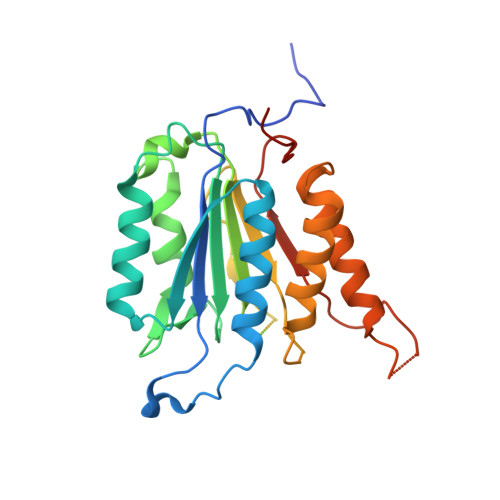Phosphorylation regulates assembly of the caspase-6 substrate-binding groove.
Velazquez-Delgado, E.M., Hardy, J.A.(2012) Structure 20: 742-751
- PubMed: 22483120
- DOI: https://doi.org/10.1016/j.str.2012.02.003
- Primary Citation of Related Structures:
3S8E - PubMed Abstract:
Caspases, a family of apoptotic proteases, are increasingly recognized as being extensively phosphorylated, usually leading to inactivation. To date, no structural mechanism for phosphorylation-based caspase inactivation is available, although this information may be key to achieving caspase-specific inhibition. Caspase-6 has recently been implicated in neurodegenerative conditions including Huntington's and Alzheimer's diseases. A full understanding of caspase-6 regulation is crucial to caspase-6-specific inhibition. Caspase-6 is phosphorylated by ARK5 kinase at serine 257 leading to suppression of cell death via caspase-6 inhibition. Our structure of the fully inactive phosphomimetic S257D reveals that phosphorylation results in a steric clash with P201 in the L2' loop. Removal of the proline side chain alleviates the clash resulting in nearly wild-type activity levels. This phosphomimetic-mediated steric clash causes misalignment of the substrate-binding groove, preventing substrate binding. Substrate-binding loop misalignment appears to be a widely used regulatory strategy among caspases and may present a new paradigm for caspase-specific control.
- Department of Chemistry, University of Massachusetts Amherst, Amherst, MA 01003, USA.
Organizational Affiliation:
















